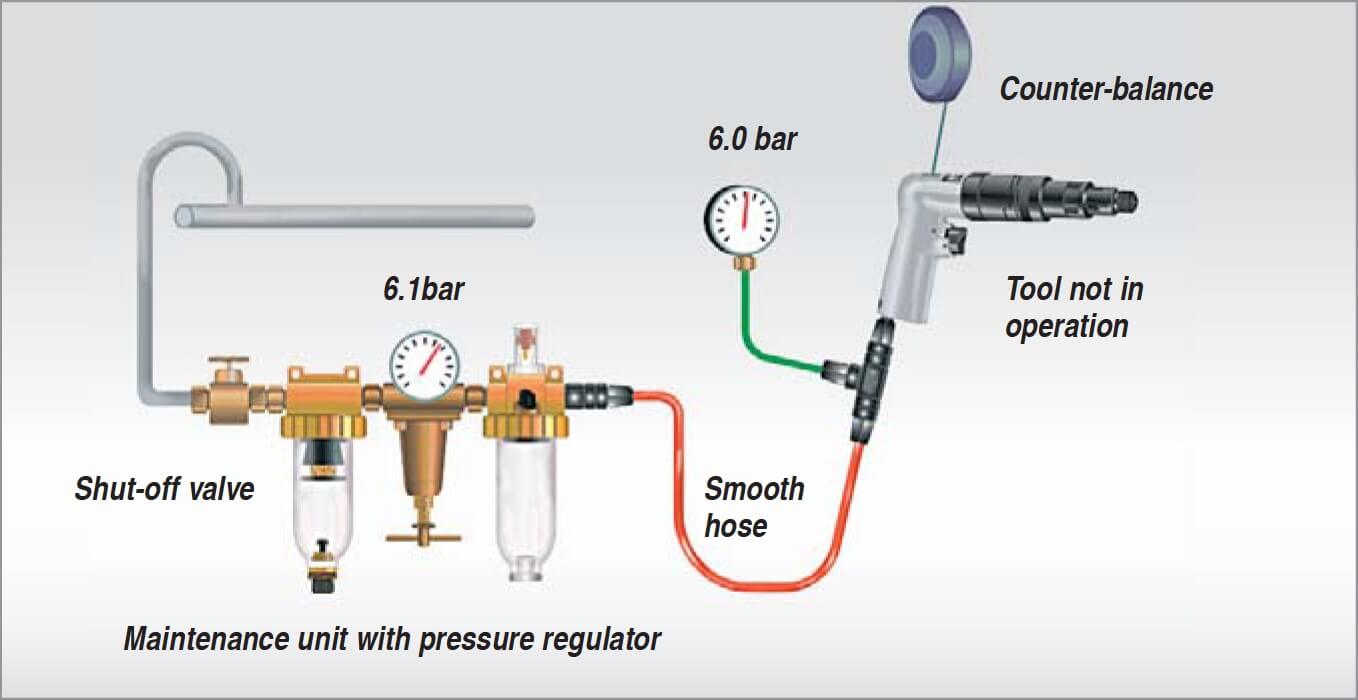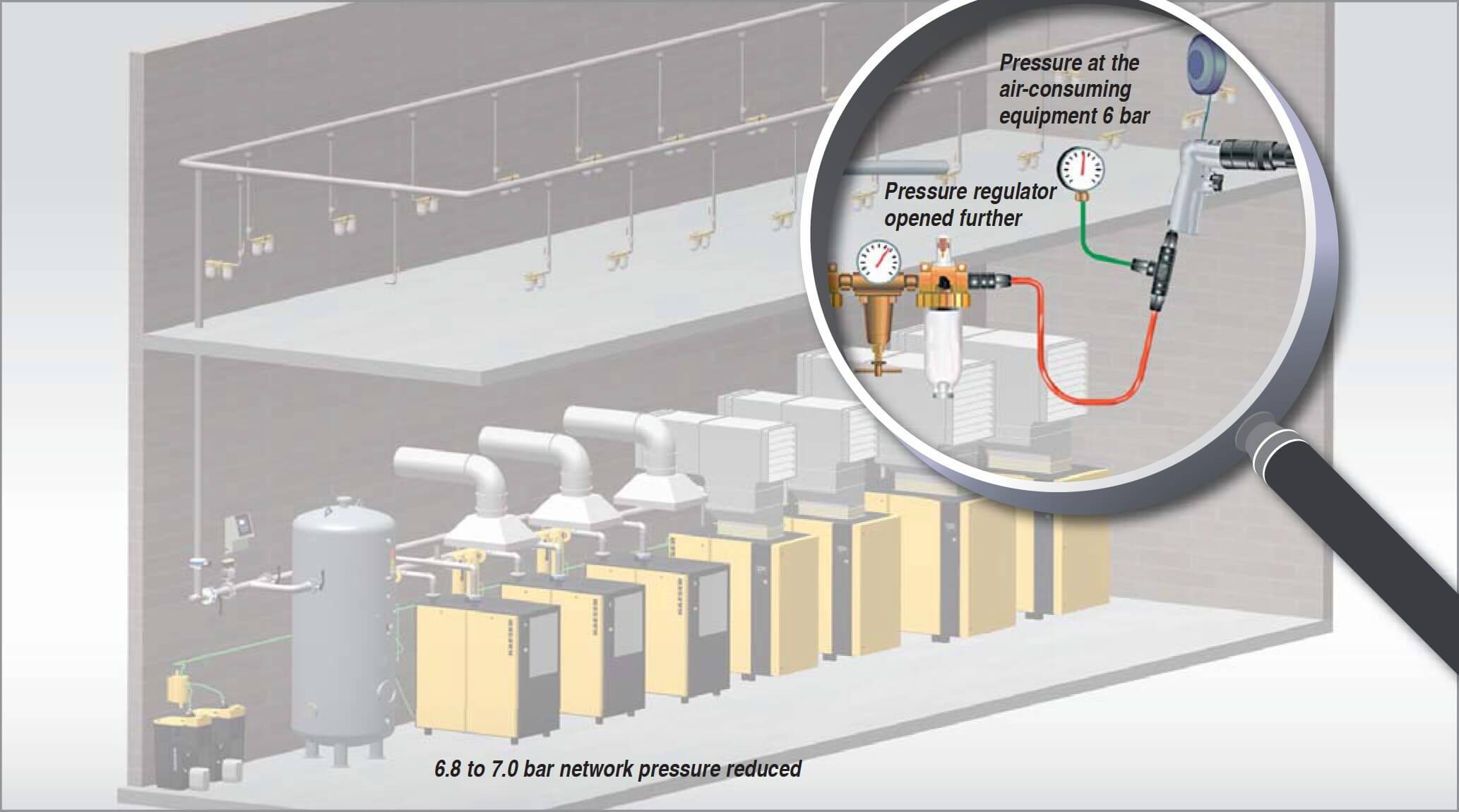The efficiency of a compressed air system doesn’t just depend on the correct working pressure. Even small measures can often have a large effect.
In many cases, the connection to the compressed air tools looks as follows: At rest, the pressure at the maintenance unit is 6.1 bar and 6.0 bar at the tool. However, this pressure is not the same as the pressure when air is being used.
Pressure drop sculelor pneumatice – what to do?
Pressure measurement on a working tool often shows a considerable pressure drop. In the following example, this drop is 2 bar; in other words the tool delivers only 54 % of its potential performance.


The causes for this can often be easily remedied:
- Insufficient connection diameter: use a quick-coupling with a larger flow passage;
- Incorrectly adjusted pressure regulator: open it further;
- System pressure too low: increase the pressure in the air-main or install pipework with a larger diameter;
- Spiral hose is too small: use a larger spiral hose or – preferably – a smooth hose;
- Pressure drop in the decentralised water separator local: dry compressed air centrally (makes the separator superfluous).
These are simple steps to restore optimal tool pressure (6bar, in this case) and performance at 100% of capacity.
Energy saving in compressed air system – in the right sense
Pressure regulators affect the efficiency of compressed air usage to a greater extent than is often realised.
In this example, the compressed air system is operating between 8 and 10 bar. The pressures of 7.5 and 9.5 bar, respectively, at the take-off points are reduced to 6 bar by a pressure regulator.

To save energy, the system pressure is reduced to between 6.8 and 7 bar. This means that a pressure of 6.1 bar is available at the network take-off points, but only 4 bar is available to the tools.

This configuration has consequences: work takes longer, work results may be defective due to insufficient tool pressure and the compressors run longer than necessary.
On the other hand, the desired savings can be easily and painlessly achieved by not only reducing the system pressure, but also by using smooth hoses, removing superfluous water separators and further opening the pressure regulators on the air-consuming equipment.